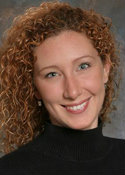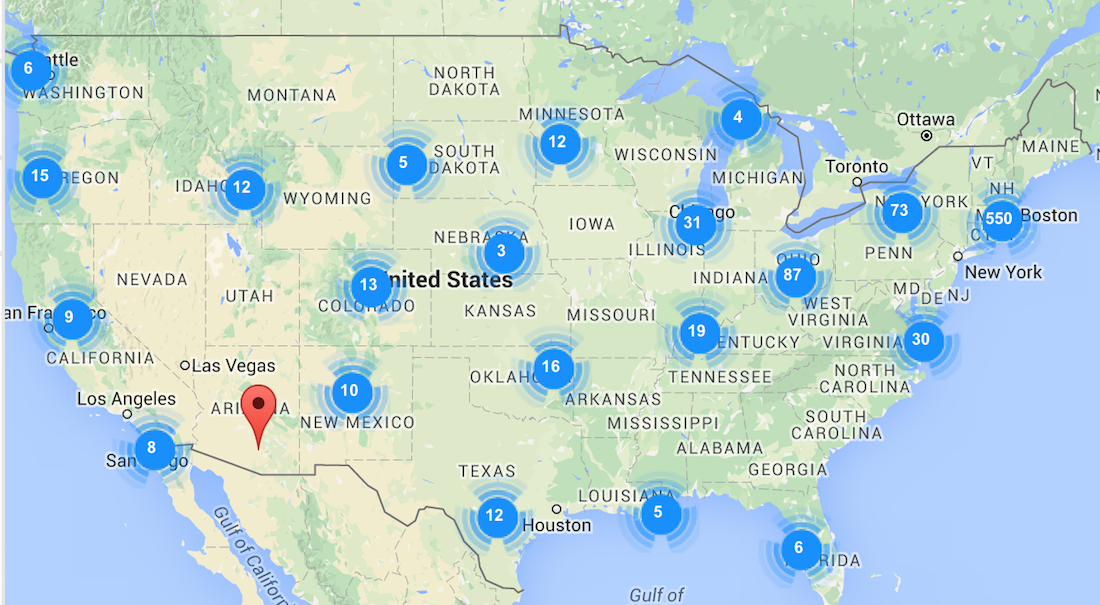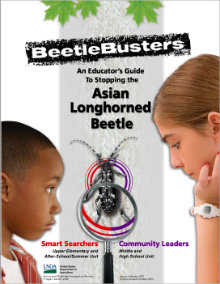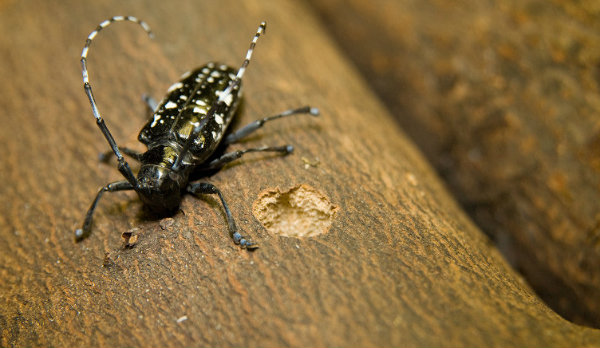Students Can Battle the Longhorned Beetle

“The landscape belongs to the person who looks at it.”
These words of Ralph Waldo Emerson are simple, yet poetic, in summing up Americans’ love affair with nature. A heightened sense of awareness exists in our society of the need to protect and preserve our natural resources. From a young age, we are taught not to be wasteful and to conserve.
As a society, we’ve earned high grades in stressing that simple measures can go a long way in protecting the environment. Recycling is almost second nature to many of us. Going paperless is no longer for the chic; it’s a necessity for many. Fuel efficiency, hybrid vehicles or the expansion of public transportation, whether driven by gas prices or gridlock, have captured the attention of a commuting culture.
Despite such high tech progress in the environmental arena, there are still many “back to basic” ways to teach kids to be good stewards of the earth.
Helping to Save Trees
It is understandably frustrating to learn that despite our best efforts to be environmentally conscious, an invasive pest has caused the loss of nearly 130,000 trees in Illinois, Massachusetts, New Jersey, New York, and Ohio. The words of Emerson are a reminder that the spread of the Asian Longhorned Beetle (ALB) could potentially alter the view of the landscape for many of us in the future.
Up to 70 percent of the U.S. tree canopy is at risk of being lost to this pest, as all states have trees the beetle can attack and complete its life-cycle in. If ALB were to stay in the United States, it could have a severe impact on the timber, maple syrup, tree nursery, and tourism industries, as well as the environment. In addition, public spaces, yards, and neighborhoods would take decades to recover.
I have seen up close the damage caused by this invasive pest. The beetle bores through the tissues that carry water and nutrients throughout the tree, which causes the tree to starve, weaken and eventually die. Once a tree is infested, it must be removed.
The good news is that we (and our kids!) can help to stop the spread of this invasive pest. The public has played a critical role in spotting the signs of the ALB. Thus far, every infestation has been reported first by an alert community member. Now the next generation of citizen scientists can learn about this invasive pest while helping to save trees.

BeetleBusters: An Educators Guide to Stopping the Asian Longhorned Beetle
USDA has developed an educators’ guide that meets all core curriculum standards to help elementary, middle and high school students understand and prevent the spread of the ALB, while learning important science concepts, and taking action in their communities.

Each lesson has Introductory, Guided Inquiry, and Take Action components that will enable your students to show what they know. In addition, the lessons are easy to teach, with Advance Prep sections and Supplemental Resources to make the most out of each one.
What to Look For on Field Trips
In addition to a classroom setting, the search for the ALB can also take place in an outdoor setting, or even a field trip can be a part of the lesson plan. It may look menacing, but the pest is harmless to people and pets. The ALB can be seen on trees, branches, walls, outdoor furniture, cars, and sidewalks and caught in pool filters. With these unique characteristics, the beetle can be easy to see:
►1 to 1 ½ inches in length
►Long antennae banded in black and white (longer than the insect’s body)
►Shiny, jet black body with random white spots
►Six legs
►Legs may appear bluish in color
In addition to looking for the beetle, you can search for signs of infestation, including:
►Perfectly round (1/4” or larger) exit holes in the tree
►Oval depressions on the bark where the eggs are laid
►Sawdust-like materials, called frass, on the ground and the branches
►Sap seeping from wounds in the tree
Check Out This Video
What to Do When You Find the Beetle
If you think you’ve found an Asian Longhorned Beetle or signs of infestation, always record the area where the specimen or damage was found. If possible, capture the insect you think is the beetle, place it in a jar and freeze it – this will preserve the insect for easy identification. Take digital pictures of the insect and the damage to your trees. You can report your findings at www.asianlonghornedbeetle.com
HEINEMANN AD CODE
In addition to searching for and learning about the ALB, an important part of being a Beetle Buster is getting the word out in the community about the invasive pest. It takes a community to help stop the Asian longhorned beetle and students are a great start.
Through the BeetleBusters guide, students can experience a sense of civic pride in helping to save trees in their communities for generations to come.
USDA Public Affairs Specialist Rhonda Santos works with the U.S. Department of Agriculture, Animal and Plant Health Inspection Service.



































